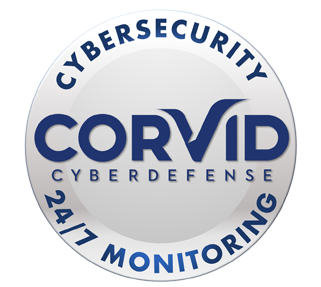 Employer-sponsored retirement benefits can play a key role in long-term financial planning. Many companies offer retirement savings plans, pensions, or other benefits that help employees prepare for the future. Understanding how these benefits work and making informed decisions about contributions, investments, and withdrawals can make a difference in reaching financial goals.
Employer-sponsored retirement benefits can play a key role in long-term financial planning. Many companies offer retirement savings plans, pensions, or other benefits that help employees prepare for the future. Understanding how these benefits work and making informed decisions about contributions, investments, and withdrawals can make a difference in reaching financial goals.
Understanding Employer-Sponsored Retirement Plans
Many employers offer retirement plans that allow employees to save for the future while receiving certain benefits, such as tax advantages or matching contributions. Some of the most common types include:
- 401(k) and 403(b) Plans – These are employer-sponsored plans that allow employees to contribute a portion of their salary, often with tax-deferred growth. Some employers offer a matching contribution up to a certain percentage.
- Pension Plans – These are defined benefit plans where an employer provides a fixed payout in retirement based on salary and years of service.
- Profit-Sharing Plans [1] – Some employers offer profit-sharing contributions to retirement accounts, providing additional savings opportunities.
Understanding the specific retirement benefits available through an employer can help you make informed decisions about participation and contribution levels.
Contributing to Employer-Sponsored Plans
One of the primary ways to optimize employer retirement benefits is to contribute regularly to available plans. Here are some factors to consider:
- Contribution Limits – The IRS sets annual contribution limits for 401(k) and 403(b) plans. In 2024, employees can contribute up to $23,000, with an additional $7,500 catch-up contribution allowed for those aged 50 and older.
- Employer Matching Contributions – If an employer offers matching contributions, contributing at least enough to receive the full match can add to long-term savings.
- Automatic Enrollment and Increases – Some employers automatically enroll employees in retirement plans and may increase contributions over time. Reviewing and adjusting contribution rates can help align savings with financial goals.
Even small contributions can add up over time, so participating in an employer-sponsored plan can be a useful way to build retirement savings.
Understanding Investment Options
Most employer retirement plans offer a variety of investment options, ranging from target-date funds to individual stocks and bonds. When selecting investments, you may want to consider:
- Risk Tolerance – Different investments carry varying levels of risk. Younger employees may have a longer time horizon and may be more comfortable with higher-risk investments, while those closer to retirement may prefer more stable options.
- Diversification – Spreading investments across different asset classes can help reduce exposure to market fluctuations.
Target-Date Funds[2] – Many plans offer target-date funds, which automatically adjust asset allocation based on an employee’s expected retirement date.
Regularly reviewing investment choices and making adjustments based on financial goals and risk tolerance can help keep a retirement portfolio aligned with long-term objectives.
Taking Advantage of Tax Benefits
Employer-sponsored retirement plans often come with tax benefits that can help employees save more efficiently.
- Traditional vs. Roth Contributions – Some employers offer both traditional (pre-tax) and Roth (after-tax) contribution options. Traditional contributions lower taxable income in the year of contribution, while Roth contributions allow for tax-free withdrawals in retirement.
- Tax-Deferred Growth – Funds in traditional retirement accounts grow tax-deferred, meaning employees do not pay taxes on earnings until they withdraw funds in retirement.
- Required Minimum Distributions (RMDs) – Traditional 401(k) and pension plans require withdrawals starting at a certain age. Understanding RMD rules can help with withdrawal planning in retirement.
Evaluating tax advantages and making informed choices about contributions can help you manage your long-term financial strategy.
Exploring Additional Retirement Benefits
Beyond traditional savings plans, some employers offer additional benefits that can support long-term financial planning. These may include:
- Health Savings Accounts (HSAs) – If an employer offers a high-deductible health plan (HDHP), employees may have access to an HSA. HSAs offer tax benefits and can be used for qualified medical expenses in retirement.
- Stock Options and Employee Stock Purchase Plans (ESPPs) – Some employers provide stock-based compensation that can contribute to retirement savings.
- Deferred Compensation Plans – Higher-income employees may have access to nonqualified deferred compensation plans that allow them to defer income until retirement.
Reviewing available benefits and incorporating them into a financial plan can help you make the most of what your employer offers.
Regularly Reviewing and Adjusting Retirement Plans
Retirement planning is not a one-time decision. Regularly reviewing employer-sponsored retirement plans and making adjustments as needed can help you stay on track with your goals. Some steps to consider:
- Reviewing Contributions Annually – Checking contribution levels at least once a year can help employees take full advantage of employer benefits.
- Adjusting Investments as Needed – As financial goals and risk tolerance change, investment choices may need to be updated.
- Monitoring Fees and Plan Changes – Employer retirement plans may have fees that affect long-term returns.
Understanding these costs and reviewing any plan changes can help with decision-making.
Planning for Retirement Withdrawals
As you approach retirement, planning how to withdraw funds from employer-sponsored plans becomes important. Key considerations include:
- Understanding Withdrawal Rules – Different retirement accounts have different withdrawal rules and tax implications.
- Coordinating Withdrawals with Other Income Sources – Social Security, pensions, and other savings may also play a role in retirement income planning.
- Minimizing Tax Impact – Spreading withdrawals over multiple years and considering Roth conversions may help with tax efficiency.
Developing a strategy for withdrawals can help with long-term financial planning in retirement.
Optimize Employer Retirement Benefits
Employer-sponsored retirement benefits offer valuable opportunities for long-term savings. By contributing regularly, understanding investment options, taking advantage of tax benefits, and reviewing benefits periodically, you can make informed decisions about your financial future. Keeping an eye on available resources and adjusting plans as needed can help you stay on track with your retirement goals.
Sources:























 Megan Jones joined the ILG Financial team in 2020 as marketing director. Megan and her husband live in Fredericksburg, VA with their German Short Haired Pointer, Gus. Megan is a graduate of Longwood University and holds a degree in communications. Megan is the oldest of Dave Lopez’s three children and not only enjoys working alongside her father, but also with her cousin, Chase, who joined the ILG Financial team in 2020 as an advisor. Megan is also a fully licensed Life, Health, and Annuity agent. When not at work, Megan enjoys sitting on the back porch with family and friends enjoying food and music.
Megan Jones joined the ILG Financial team in 2020 as marketing director. Megan and her husband live in Fredericksburg, VA with their German Short Haired Pointer, Gus. Megan is a graduate of Longwood University and holds a degree in communications. Megan is the oldest of Dave Lopez’s three children and not only enjoys working alongside her father, but also with her cousin, Chase, who joined the ILG Financial team in 2020 as an advisor. Megan is also a fully licensed Life, Health, and Annuity agent. When not at work, Megan enjoys sitting on the back porch with family and friends enjoying food and music. Chase Lopez joined the ILG Financial team in 2020 as an advisor. Chase is a 2016 James Madison University graduate with a degree in management. Chase has been trained under the tutelage of Dave Lopez, who is not only the founder and managing member of ILG Financial, but also is Chase’s uncle and godfather. He also enjoys working alongside his cousin, Megan, who is Dave’s daughter.
Chase Lopez joined the ILG Financial team in 2020 as an advisor. Chase is a 2016 James Madison University graduate with a degree in management. Chase has been trained under the tutelage of Dave Lopez, who is not only the founder and managing member of ILG Financial, but also is Chase’s uncle and godfather. He also enjoys working alongside his cousin, Megan, who is Dave’s daughter. Amy Anderson joined the ILG Financial team in 2023 as the client relations coordinator. Her responsibilities include scheduling of appointments, annual check-up notifications, and annuity and required minimum distribution assistance. She is a graduate of Harding University with a degree in Computer Information Systems. Amy and her husband have two children and she enjoys reading, crocheting, music and spending time with her family.
Amy Anderson joined the ILG Financial team in 2023 as the client relations coordinator. Her responsibilities include scheduling of appointments, annual check-up notifications, and annuity and required minimum distribution assistance. She is a graduate of Harding University with a degree in Computer Information Systems. Amy and her husband have two children and she enjoys reading, crocheting, music and spending time with her family. Jessica Carson joined the ILG Financial team in 2018 as an agent. Jessica and her husband have four children, two dogs, 3 barn cats, 5 chickens, and three parakeets. She indeed loves her children and pets! When not at work, Jessica enjoys playing the piano and cello as well as traveling and spending time outside with her family, hiking, fishing, and boating.
Jessica Carson joined the ILG Financial team in 2018 as an agent. Jessica and her husband have four children, two dogs, 3 barn cats, 5 chickens, and three parakeets. She indeed loves her children and pets! When not at work, Jessica enjoys playing the piano and cello as well as traveling and spending time outside with her family, hiking, fishing, and boating. Terri Center joined the ILG Financial team in 2019 as client services manager. She handles client records, application processing, and gathering information to provide a professional and friendly experience with all of our clients. Terri is a graduate of Oakland University. She is married and has two children. She enjoys hiking, family time, and puzzle challenging video games. She also likes to share her creativity in her canvas paintings and sewing projects.
Terri Center joined the ILG Financial team in 2019 as client services manager. She handles client records, application processing, and gathering information to provide a professional and friendly experience with all of our clients. Terri is a graduate of Oakland University. She is married and has two children. She enjoys hiking, family time, and puzzle challenging video games. She also likes to share her creativity in her canvas paintings and sewing projects.